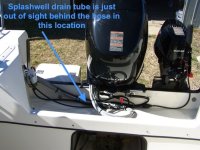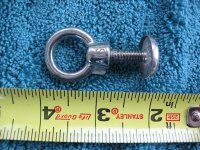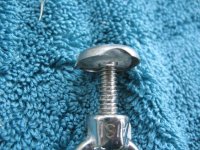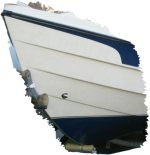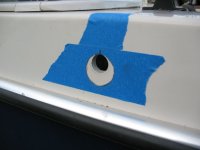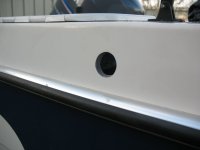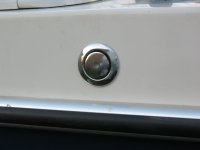This is just a parts tale so far, but it may have a happy ending.
So, like a number of other 22's I've seen, mine has the fuel vent fittings right up under the gunwale, with absolutely no room for a proper loop, which means that water/spray has a direct path into the fuel tank. Given that I'm re-doing my fuel system and have the vent hoses off, the idea of just putting them back onto those vents wasn't really thrilling me.
In another thread (
http://www.c-brats.com/viewtopic.php?t=19063&postdays=0&postorder=asc&start=30 top of the page), Will-C had recommended a set of Attwood P-trap vents to the original poster. Thing is, I had already looked (longingly) at those vents, but it didn't look like they would fit because they require at least 1-1/2" from the center of the hole in the topsides to the underside of the gunwale (on the inside). On my boat there was a scant 1" :cry
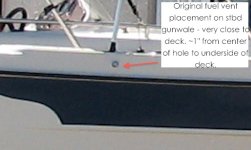
Still, I kept looking at them on the Attwood web page, as if wishing could make them fit

No, actually, I was thinking about potentially carving out a bit of the underside of the deck core to make them fit, or even disusing those holes and making new ones. But wait......look at this page....

I've installed flush (non-P-trap) vents before, and because they recess into a dish of sorts, the hole in the boat is necessarily larger. So how could the flush model of the vent (one is flush, the other three are surface-mounted) take the same 3/4" hole as the others? Just to confirm, I looked at Attwood's instructions for the same-style-but-not-P-trap flush mount vent, and lo-and-behold.... it takes a 1-3/8" hole. That's more like it!

Just to make sure there wasn't something I was missing, I sent an e-mail to Attwood. They confirmed that their web page had a mistake (that they said they will correct) and that the #1674 Flush-mount P-trap vent does take a 1-3/8" hole. You can probably see where I am going with this: If I make the current hole (~3/4") into the new hole, but put all the "new" hole on the bottom edge of the existing one, then I will have a bit more than the required 1-1/2" from the center of the hole to the underside of the gunwale and, Voila, fuel vents that are very water resistant, even though they were put in "too high up" at C-Dory originally (I looked up Attwood's test results and the vents seem very resistant to spray and even water). To top it off, they look nice.
Armed with this encouraging information, I ordered a pair of the vents. They arrived today and I don't see anything obvious that would make them not work (can you tell I don't "trust" boat projects until they are done and I've gotten past any "gotchas"? :lol: ) I'll report back once I've actually tried them in real life.
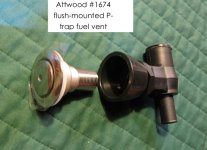
The black plastic "bowl" you see in the middle goes on the inside of the boat, and then the P-trap screws on after that. The vents come with three different bowls to allow for varying hull thicknesses.
Sunbeam :hot
PS: I put a link in that above-linked thread to this one, so the trail can be followed.

